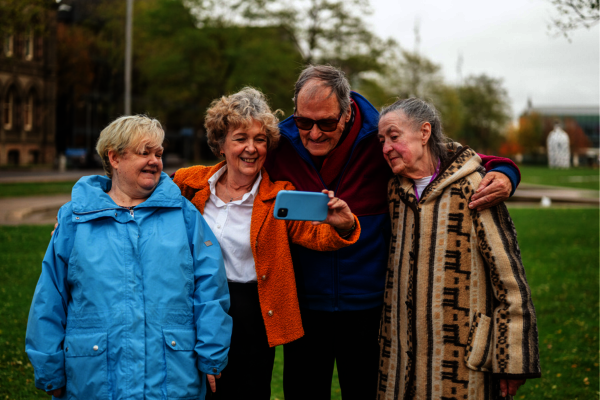When we think of ‘user engagement’ and ensuring people who will be using a service or product are involved in shaping its design and delivery, typically we imagine a group of people sat round a table together sharing their experiences and opinions with post it notes, flip charts, markers (and the all-important tea and biscuits).
It’s a scene that largely hasn’t been possible for the best part of the last year, yet the need to involve users in product and service design remains as crucial as ever. This is the case for the innovative projects funded by UKRI’s Healthy Ageing Challenge, which Ageing Better delivers a Community of Practice to support.
Working with Humanly, we brought together the Trailblazer projects from the Community to look at the barriers to traditional face-to-face user engagement caused by COVID-19 and how to overcome them. By sharing experiences, considering user perspectives, and comparing approaches, we identified a number of ways to do this. These are published in our new thematic paper, Remote engagement: Removing barriers to inclusion in the context of COVID-19.
As part of the report, two of the Trailblazer projects we work with, Business Health Matters and Blackwood Neighbourhoods for Independent Living, shared best practice from their recent experiences, which are captured in the report as case studies.
The takeaways from this work could support businesses, third sector organisations and researchers to engage more meaningfully with the potential users of their services, products and resources without needing to be in a room together. We hope these considerations will lead to high quality user engagement long after the pandemic is over.
Our top ways to improve remote engagement:


